Bridging the Skills Gap
Your No-Nonsense Guide to Leveling Up Your Workforce
It's time to talk about the elephant in the room - the skills gap. It's not just a buzzword; it's what's keeping HR pros awake at night. It's a real head-scratcher for 40% of companies out there. This widening chasm between the capabilities organizations need and the skills their workforce currently possesses threatens productivity, innovation, and competitive positioning.
The Growing Skills Divide
The pace of technological advancement has dramatically accelerated the evolution of skill requirements across virtually every industry. What was cutting-edge expertise five years ago may be obsolete today, while entirely new capabilities have emerged as essential. This rapid transformation creates significant challenges:
-
Critical positions remain unfilled for months as qualified candidates prove increasingly scarce
-
Existing employees struggle to adapt to changing job requirements without structured development support
-
Productivity suffers as teams lack the specialized capabilities needed for optimal performance
-
Innovation stalls when organizations lack the technical expertise to leverage emerging technologies
-
Competitive disadvantages emerge when rivals successfully develop capabilities your organization lacks
Join global companies that rely on Horsefly insights:




Understanding Your Unique Skills Landscape
Effective skills gap remediation begins with comprehensive assessment. Before implementing solutions, organizations must develop clear visibility into:
-
Current capability inventory - Documenting the skills your workforce currently possesses across both technical and soft skill domains
-
Future requirements mapping - Identifying the capabilities that will drive organizational success over the next 2-5 years
-
Gap analysis prioritization - Determining which skill deficiencies pose the most significant strategic risk
-
Build vs. buy decision framework - Creating criteria for when to develop existing talent versus acquiring new employees
-
Individual development potential - Assessing which employees demonstrate the highest aptitude for skill acquisition
Key Strategies for Effective Upskilling and Reskilling
Forward-thinking organizations implement multi-faceted approaches to skills development rather than relying on single-channel solutions. Our guide explores proven strategies including:
-
Microlearning ecosystems - Creating digestible learning opportunities that fit within workflow constraints
-
Experiential development - Designing stretch assignments that build capabilities through practical application
-
Mentorship acceleration - Implementing structured knowledge transfer between experienced and developing employees
-
Technology-enabled practice environments - Utilizing simulation tools that allow risk-free skill application
-
Cross-functional exposure - Creating rotational opportunities that build broader organizational capabilities
Measuring Skills Development ROI
Unlike traditional training programs with questionable business impact, sophisticated skills development initiatives deliver measurable returns. Our guide provides frameworks for tracking critical metrics:
-
How to implement capability tracking systems that document skill progression objectively
-
Methods for connecting skills acquisition to performance outcomes through statistical correlation
-
Approaches for calculating development program ROI through productivity and innovation metrics
-
Techniques for forecasting future capability needs based on organizational strategy and market trends
-
Systems for incentivizing continuous learning through recognition and advancement opportunity
Building a Skills-Forward Culture
Successful skills development requires more than programmatic interventions. Organizations that truly excel in capability building create cultures where continuous learning becomes embedded in daily operations. This cultural transformation requires:
-
Leadership modeling of continuous development through visible learning commitments
-
Integration of learning objectives into performance evaluation systems
-
Recognition and reward mechanisms that celebrate skill acquisition
-
Communication approaches that reinforce learning as a strategic priority
-
Resource allocation that demonstrates organizational commitment to capability building
Prepare Your Workforce for Tomorrow
In a business environment where capabilities evolve at unprecedented speed, organizations cannot afford complacency in skills development. Those that implement robust approaches to capability building create sustainable competitive advantages that drive market leadership.
Our guide will dive into why tackling the skills gap is so crucial. Plus, we've got some actionable strategies up our sleeve that'll help make your workforce development plan outshine all the rest. Download today!
Fuel Your Decision-Making With Over 1 Trillion Data Points
Powered by a unique taxonomy of over
1 Million
keywords translated and localized in 39 languages
Delivering insights for more than
80,000
talent market searches each month
Granular talent analysis across
170,000
towns & cities worldwide
Why Global Companies
Choose Horsefly
“Prior to Horsefly, we could give an opinion but not really back it up with anything reliable and tangible in terms of data.”
— David Scott,
Technology Recruitment Manager at Nationwide Building Society
“We had three requirements: We needed highly customizable queries from locations across the globe to specific roles in niche industries. We needed a cost-effective option, and we needed to have the full data set available within two days. Horsefly was the only company that fit the bill.”
— Gerardo Tobar,
Global Recruitment Project Manager, TELUS International